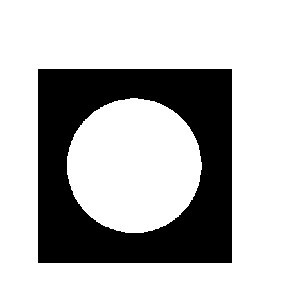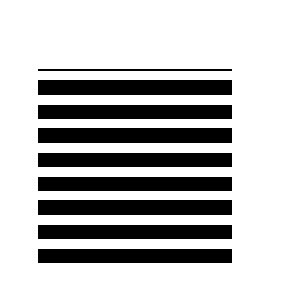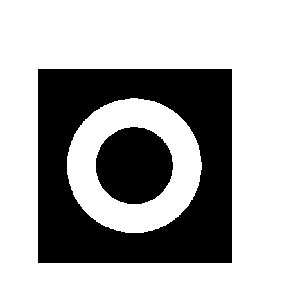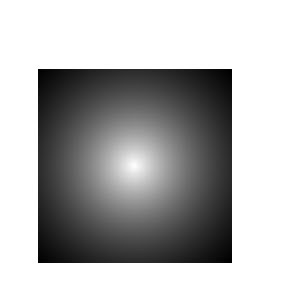The figures below are the resulting apertures together with the code(written in Scilab) used.
example:
centered circular aperture
code:
nx = 300; ny = 300; //defines the number of elements along x and y
x = linspace(-1,1,nx); //defines the range in x
y = linspace(-1,1,ny); //defines the range in y
[X,Y] = ndgrid(x,y); //creates two 2-D arrays of x and y coordinates
r= sqrt(X.^2 + Y.^2); //note element-per-element squaring of X and Y
A = zeros (nx,ny); //creates a matrix consisting of all zero elements
A (find(r<0.7)) style="color: rgb(102, 255, 153);">//shows the image
resulting aperture:

Figure 1: Centered Circular Aperture
EXERCISES:
EXERCISES:
1. Centered Square Aperture
code:
nx = 300; ny = 300;
x = linspace(-1,1,nx);
y = linspace(-1,1,ny);
height = 50; //assigns a particular no. to the variable height (to be used later in the code)
[X,Y] = ndgrid(x,y);
A = zeros (nx,ny);
A (nx/2-height:nx/2+height, ny/2-height:ny/2+height) = 1; //finds the center of the image and designates the value equal to 1 to the square formed by adding and subtracting the variable height to this center
imshow (A, []);2. Sinusoid along the x-direction
code:
nx = 300; ny = 300;
x = linspace(-1,1,nx);
y = linspace(-1,1,ny);
frequency = 6*%pi; //assigns the frequency of the sine wave
[X,Y] = ndgrid(x,y);
A = sin(X.*frequency);
imshow (A, []);
Figure 3: Sinusoid along the x-direction
3. Grating along the x-direction
code:
nx = 300; ny = 300;
x = linspace(-1,1,nx);
y = linspace(-1,1,ny);
frequency = 8*%pi;
[X,Y] = ndgrid(x,y);
A = sin(X.*frequency);
bw = im2bw(A, 0.3); //binarizes the pixel values
imshow (bw, []);

Figure 4: Gratings along the x-axis
4. Annular Aperture
code:
x = 300; ny = 300;
x = linspace(-1,1,nx);
y = linspace(-1,1,ny);
[X,Y] = ndgrid(x,y);
r= sqrt(X.^2 + Y.^2);
A = zeros (nx,ny);
A (find(r<0.7))>
code:
x = 300; ny = 300;
x = linspace(-1,1,nx);
y = linspace(-1,1,ny);
[X,Y] = ndgrid(x,y);
r= sqrt(X.^2 + Y.^2);
A = zeros (nx,ny);
A (find(r<0.7))>
 Figure 5: Annular Apperture
Figure 5: Annular Apperture5. Circular aperture with graded transparency (gaussian transparency)
code:
nx = 300; ny = 300;
x = linspace(-1,1,nx);
y = linspace(-1,1,ny);
[X,Y] = ndgrid(x,y);
r= sqrt(X.^2 + Y.^2);
A = zeros (nx,ny);
A = exp(-r); //assigns an exponential value to radius r
imshow (A, []);

code:
nx = 300; ny = 300;
x = linspace(-1,1,nx);
y = linspace(-1,1,ny);
[X,Y] = ndgrid(x,y);
r= sqrt(X.^2 + Y.^2);
A = zeros (nx,ny);
A = exp(-r); //assigns an exponential value to radius r
imshow (A, []);

Figure 6: Circular aperture with graded transparency (gaussian transparency)
I would like to thank Joseph and Troy for helping me finish this activity... :)
encountered problems: familiarizing with scilab and blogging the results
Grade: 10/10 since I was able to produce the images which are asked for this activity.
Reference:
186 handout for activity 2
encountered problems: familiarizing with scilab and blogging the results
Grade: 10/10 since I was able to produce the images which are asked for this activity.
Reference:
186 handout for activity 2


No comments:
Post a Comment